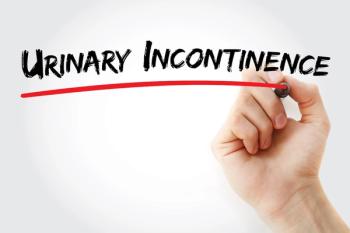
Disability Degree, Home Health Use May Signal Need for Patient Support in MM
Clinical investigators evaluated the impact of home health services on disability status and receipt of treatment among adults 66 years and older with a new diagnosis of multiple myeloma (MM).
Treatment receipt and home health (HH) care utilization differed in a large cohort of older adult patients with a new diagnosis of
Outcomes were compared between patients 66 years and older who received HH care (n = 6850) and those who did not (n = 30,430) for an MM diagnosis received between 2010 and 2017, using Surveillance, Epidemiology, and End Results–Medicare linked data. The Outcome and Assessment Information Set (OASIS) provided the data on functional capacity of these individuals; this data set, from CMS, is a repository of skilled home health services administrative and clinical assessment information on Medicaid- or Medicare-reimbursable services provided to all adults 18 years and older. HH agencies have been required to report these data to CMS since 1999.2
“Previous research reliant upon single-center studies at academic institutions and therapeutic clinical trials largely reflects MM populations that are often disproportionately fit compared with the general MM population,” the study authors wrote. “In this study, we evaluated associations between functional disability and treatment receipt/outcomes among older adults with newly diagnosed MM using a large, diverse, and more broadly generalizable nationwide data source.”
For their analysis, they considered a patient to have received HH if they had at least 1 OASIS assessment in the year leading up to their MM diagnosis.
HH recipients with MM were more likely to be older, with 26.8% and 38.6% being aged 76 to 81 years and 82 years or older vs 24.6% and 21.8%, respectively, of the patients who did not receive HH services. They were also more likely to be female (51.9% vs 43.0%), non-Hispanic Black (19.9% vs 17.2%), not married (62.3% vs 53.2%), to live in a county with a higher level of poverty (highest quartile, 25.2% vs 21.7%), and to have not completed high school (27.4% vs 24.5%).
The most prevalent degree of disability from MM was mild (34.5%), followed by severe (33.3%) and moderate (32.1%).
There was a significant difference in median (IQR) comorbid conditions among a subset of patients (n = 20,328) with Medicare Parts A and B continuous enrollment for the year before and after (or until death) their diagnosis who had fee-for-service (FFS) coverage. FFS HH recipients overwhelmingly more often had 2 or more comorbidities vs FFS non-HH recipients, at 74.9% vs 50.4%, and non-HH recipients were more likely to have no comorbidities (28.5% vs 12.5%) or 1 comorbidity (21.2% vs 12.6%).
There was a higher rate of 3-year mortality among the HH recipients vs the nonrecipients, at 67.3% vs 43.4%. However, the crude risk ratio for mortality did decrease from years 1 to 5 post diagnosis: year 1, 1.88 (95% CI, 1.82-1.94), vs year 5, 1.38 (95% CI, 1.35-1.40). In addition, at all levels of disability, HH recipients had a higher risk of death:
- Mild disability: 1.43 (95% CI, 1.39-1.48)
- Moderate disability: 1.53 (95% CI, 1.48-1.58)
- Severe disability: 1.70 (95% CI, 1.65-1.75)
Regarding receipt of therapy, a higher degree of disability correlated with being less likely to receive MM therapy in the year following diagnosis. Compared with mild disability, those with severe disability were 30% less likely (HR, 0.70; 95% CI, 0.56-0.88) to receive MM-directed treatment, and compared with moderate disability, 37% less likely (HR, 0.63; 95% CI, 0.51-0.79). A moderate level of disability was linked to a 10% greater chance of treatment (HR, 1.10; 95% CI, 1.02-1.20).
A subanalysis that investigated chemotherapy receipt showed that, again, greater disability meant a lesser likelihood of receiving intensive triplet therapy. Those with MM and severe disability had a 43% lesser likelihood (HR, 0.57; 95% CI, 0.35-0.93) than those with MM and mild disability.
Lastly, among those currently receiving HH services who had received them in the past, Medicare enrollees with mild disability had less emergency department (ED) visits and inpatient hospitalizations in the year after their diagnosis vs those with moderate or severe disability:
- ED visits: vs moderate disability, –0.34 (95% CI, –0.50 to –0.18); vs severe disability, –0.57 (95% CI, –1.05 to –0.10)
- Hospitalizations: vs moderate disability, –0.42 (95% CI, –0.54 to –0.30); vs severe disability, –0.50 (95% CI, –0.93 to –0.26)
The authors note that a principal strength of their findings is that they echo previous studies’ results on associations between disability and health outcomes among older adults with MM. Plus, the present analysis was conducted among a very large and diverse population compared with previous similar analyses conducted at academic medical centers or within clinical trials.
“Among older adults with MM receiving HH services, disability is a predictor of early mortality,” they concluded. “HH service receipt may also identify individuals who would most benefit from more thorough clinical assessments, such as geriatric assessment, to identify other areas of vulnerability and opportunities for management and supportive care.”
References
- Jensen CE, Kuo TM, LeBlanc MR, et al. Functional status associations with treatment receipt and outcomes among older adults newly diagnosed with multiple myeloma. JCO Clin Cancer Inform. Published online February 6, 2024. doi:10.1200/CCI.23.00214
- Home health quality reporting program. CMS. Updated October 4, 2023. Accessed February 7, 2024. https://www.cms.gov/medicare/quality/home-health
Newsletter
Stay ahead of policy, cost, and value—subscribe to AJMC for expert insights at the intersection of clinical care and health economics.





























































